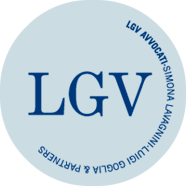THE ADVOCATE GENERAL ADVISES ON THE SCOPE OF APPLICATION OF THE PRINCIPLES OF THE IP TRANSLATOR JUDGMENT – THE CASE “Lambretta” – C 577/14 P
29/09/2016
Is the burden of precise indication of protected products and services confined to the trade mark application or does it also concern marks that have already been registered at the time of the famous judgment of the Court of Justice? In the context of a dispute concerning forfeiture for a five year period of non-use of the Community mark “Lambretta”, rigid application of the above mentioned principles was requested and not only with respect to trade mark applications but also for marks already registered at the time of the aforesaid decision. Within case C-577/14, the Advocate General has now expressed his doubts as to the applicability of the principles in the described context.
With decision dated 24 September 2010, the Cancellation Division of the EUIPO declared partial forfeiture for a five year period of non-use of the mark “Lambretta” for products falling within, among other things, class 12 of the Niece classification. The title of this class includes, according to the Niece Classification, «Vehicles; terrestrial, aerial and nautical locomotion devices» and does not expressly include spare parts for these products. The petition against said decision was not successful (with reference to products falling within class 12): the Petition Commission considered actual use of the “Lambretta” mark for products of class 12 to be insufficiently proved and held the proffered evidence for use of the mark with respect to spare parts (for products falling within said class) to be irrelevant. This was because the spare parts, not expressly claimed with the trade mark application, would not fall within the objective scope of protection on the basis of the principles of IP Translator judgment.
The decision of the Petition Commission was appealed with a cancellation petition before the Tribunal: it was said that the Commission wrongly included the spare parts in the forfeiture declaration, where said spare parts would fall within the scope of protection in accordance with the so-called “inclusive criterion”. Based on such criterion, if a trade mark application for registration mentions – as was the case here – without distinction, the goods indicated in the title of a class, protection concerns all products of the alphabetical list of goods and services falling within such class.
The decision of the Petition Commission was overruled by the Tribunal which had excluded the applicability of the principles deriving from the IP Translator decision. Also the decision of the Tribunal was appealed by the party who had interest in the forfeiture of the mark and the proceedings are now pending before the Court of Justice (C-577/14). The Advocate General, who recently filed his conclusions, believes that it is not possible to transpose sic et simpliciter the IP Translator judgment, which concerned a trade mark application, to the case of a situation in which the mark was already registered and therefore proposes to reject the petition. Correctly, the EUIPO applied the “inclusive criterion” for imperative needs of legal certainty, a principle integrated in the legal system of the European Union.
The proposal of the Advocate General seems to have been determined by the new art. 28, para. 8, of the European Union trade mark regulation that granted owner of already registered EU trade mark the option of presenting a declaration to the EUIPO by 24 September 2016 in order to specify definitevly the scope of protection.
